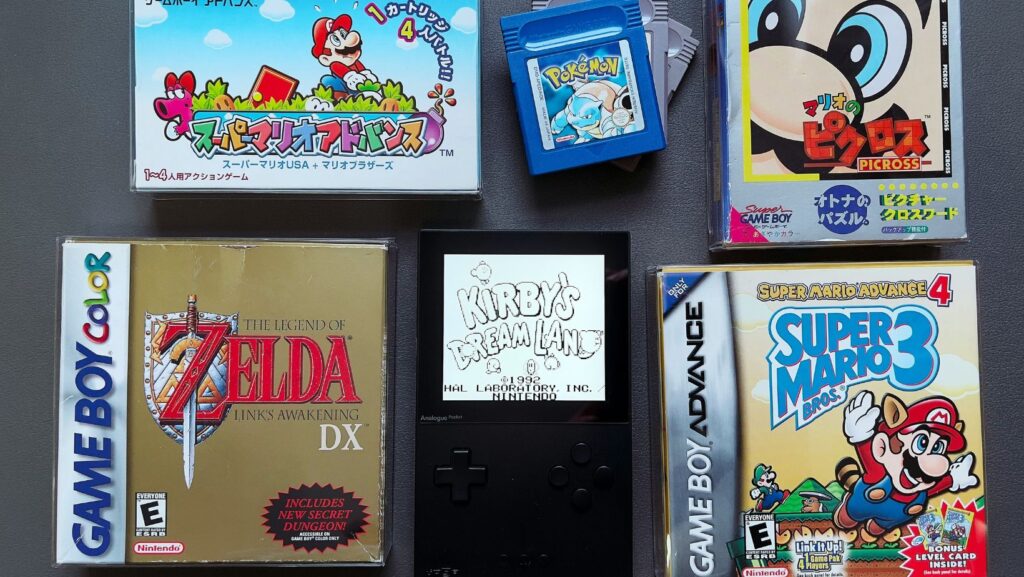Riding the wave of nostalgia, retro gaming has become a beloved pastime for many. But to truly relive the glory days of gaming, you need the right TV. This article will delve into the best TVs for retro gaming, offering insights to enhance your pixelated adventures.
From tube TVs to modern flat screens, the choice can be overwhelming. It’s not just about aesthetics, but also about compatibility, resolution, and input lag. So whether you’re dusting off your old consoles or exploring emulators, we’ve got you covered.
Understanding the Nostalgic Appeal of Retro Gaming
Retro gaming’s appeal lies in its ability to tug at the heartstrings of gamers who grew up during the golden age of arcade games, handheld devices, and home consoles. Its charm emanates from the simplistic style of gameplay, pixelated graphics, 8-bit music, and a profound sense of nostalgia that it induces. It’s an avenue for gamers to reconnect with their favorite virtual characters, levels, and games, harking back to days when simplicity superseded sophistication in video games.

When replaying these games, gamers aren’t simply revisiting their childhood pastime; they are also recreating memories filled with joy, excitement, and the thrill of victory. The low-definition, pixelated graphics give retro games their distinctive visual appeal, matching the aesthetic of older television sets making it an essential part of the experience. Ensuring a compatible, high-quality TV with minimum input lag and an optimal resolution enriches the gaming experience, providing authentic visuals from a past era.
The influx of games from the 80s and 90s onto modern consoles indicates the sustained demand for retro gaming. Game enthusiasts take on the arduous task of finding the ideal TV for retro gaming because the right device can transform the overall experience. After all, a truly immersive retro gaming experience is about more than just the game—it’s also about creating a retro aesthetic living room setup centered on the perfect TV.
Best TVs for Retro Gaming

Retro gaming enthusiasts prioritize specific TV features. Aligning these aspects with their gaming needs facilitates an engrossing, nostalgic experience. Among the endless sea of TVs, four stand out for their retro gaming compatibility. They boast aspects like satisfactory input lag, proper resolution, compatibility with older consoles, and ideal refresh rate.
- Sony BVM D32E1WU: Widely appreciated for its robust multi-format support and impeccable color accuracy, it’s the dream of many retro gamers. This professional-grade monitor exhibits impressive compatibility with older consoles.
- LG OLED CX: Noteworthy for its near zero input lag and 120Hz refresh rate, it’s perfect for fast-paced vintage games. Inbuilt game mode further enhances the gaming dynamics.
- Samsung QLED Q80T: This TV offers remarkably crisp images due to its high resolution. Compatibility with older consoles remains uncompromised, rendering it an excellent choice for retro gaming.
- TCL R635: Budget-conscious gamers find value in its versatility. It showcases low input lag and a refresh rate of 120Hz. Its THX Certified Game Mode guarantees an optimal gaming experience.
These selections represent the best in terms of service to retro gaming. Enthusiasts find them precious in reviving a perfect, bygone gaming era. Revisiting the beloved classic games becomes an immersive affair with these TVs.
Tips for Setting Up Your TV for Retro Gaming
Achieving the best retro gaming experience necessitates deliberate TV setup. Emphasize accommodating important aspects namely input lag, resolution, and refresh rate.

- Configure TV settings for low input lag: Input lag refers to the delay between the gaming console and the TV’s screen response. Configuring the TV for a low input lag, as found in the Sony BVM D32E1WU, becomes pivotal for smooth retro gaming.
- Set the correct resolution: Setting the TV resolution to match those of the retro games optimizes the display. Ensuring the TV, like the LG OLED CX, matches 8-bit or 16-bit graphics of the games, provides a more authentic gaming experience.
- Adjust the refresh rate: The refresh rate charts how frequently the screen updates with new images. Configuring the TV to have a high refresh rate, similar to the Samsung QLED Q80T, offers a more fluid gaming experience.
- Connect using the right ports: Retro gaming consoles often come with AV cables, unlike newer HDMI-based consoles. TCL R635 TVs for instance, equip the necessary ports to ensure easy connection with retro gaming consoles.
Lastly, using a gaming mode, if available, can potentially enhance the gaming experience by optimizing the TV’s settings for gameplay. This setup process draws on the nostalgic appeal of retro gaming, promising an immersive and enriched playtime.


